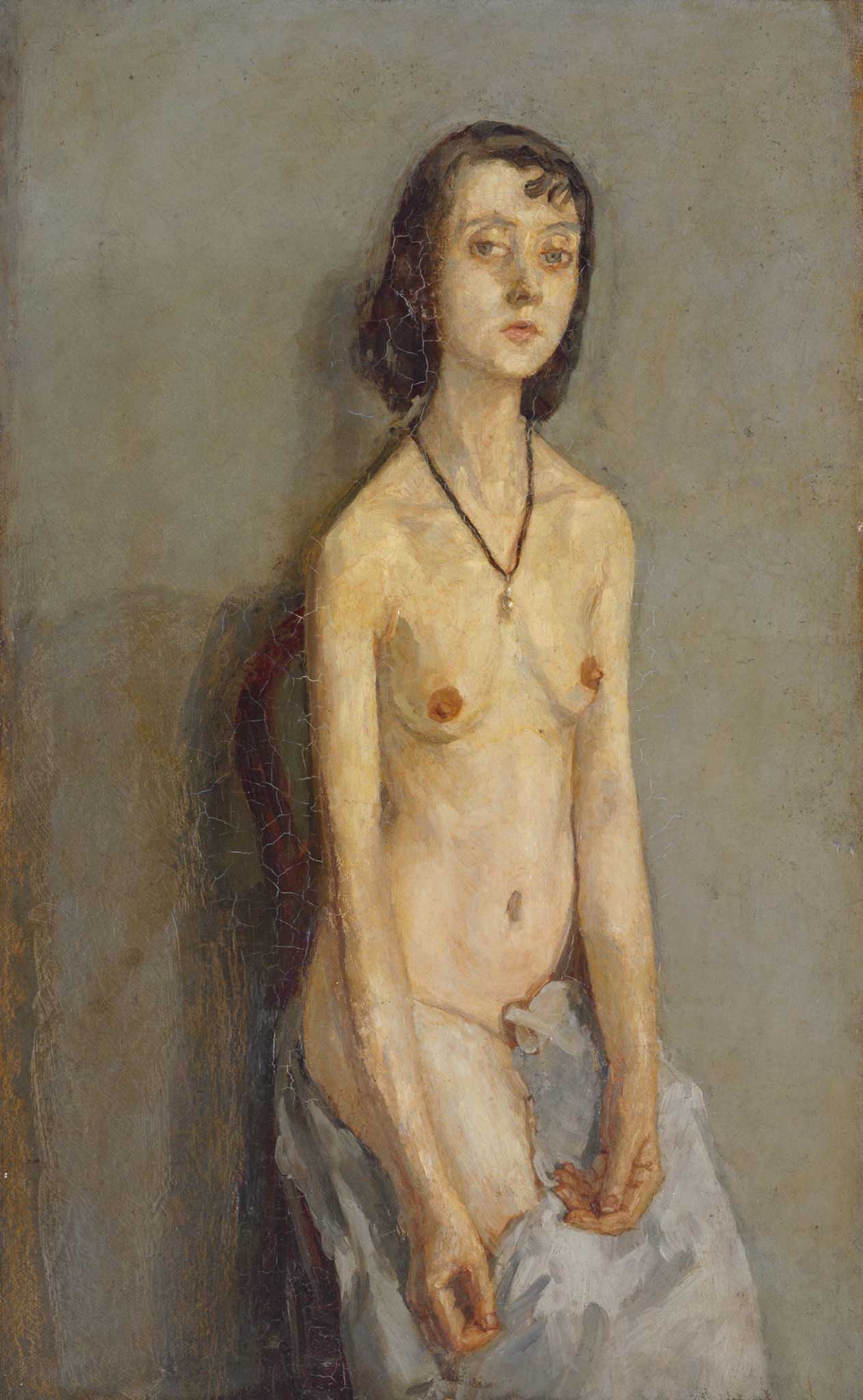Great Works: Nude Girl (1909-10) by Gwen John
Tate, London

Nakedness or nudity, that is the issue. Nakedness comes unadorned. It steps out from behind the bathroom door. It is not for sale in the auction house. Nudity, on the other hand, is a species of confection that is subject to the rules of art and artfulness.
The painting pictured above came just two years after Picasso's Les Demoiselles d'Avignon. Picasso was showing the female body through a prism of savagery. That painting feels perfectly calculated to shock us in a very particular way. It is a taunt, a gage. It is also a male painting. You could argue that Gwen John takes no such liberties here. And yet it would not be quite true.
This painting is more troubling in its way than the Picasso, but it seems less so because it is painted within the conventions of realism. We see the female without some of the customary attributes of femininity. And it is a female painter who is giving us this audacious view of the feminine.
The female body had not generally been painted in this way before. There is an ordinariness, a stripped bareness, about it that is likely to stick in the gullet of a certain kind of connoisseur. We do not expect our female forms to be like this. We do not want visual disappointment. We want to lick our lips. We expect the female form in art to embody sensuality. That had been going on for centuries. Even the Madonna, though clothed, was never a poor and shrunken thing. There was usually a modicum of coy sexual appeal behind the veil of piety. Not so here.
This is Fenella Lovell, the painter's friend, skinny, olive-skinned, slack-shouldered. She looks like not so much the subject of this portrait as its rather resigned and unwilling victim. She is backed up against a dingy painted wall, which singularly fails to set her off. She is only what she is, and that to the utmost.
There is perhaps an element of gentle tease in that rather crude use of crudely rendered drapery, which seems to be falling away from her – or perhaps she is indeed emerging from it, as a sculpture might emerge from marble. The skin looks borne earthward, as if it is hanging off its frame. The nipples are pert, but all else seems to suggest a flattening. Where is the curvaceousness? Its lack seems to proclaim: the curvaceously feminine is a lie. She is appraising us sullenly, as if to say: this is as much as there is.
A title rich in irony and provocation then.
About the artist: Gwen John (1876-1939)
During her lifetime, the British painter Gwen John, who was born and grew up in Pembrokeshire, was overshadowed by her more famous and flamboyant younger brother, Augustus. At the turn of the century, she eked out a meagre pittance of a living as a life model in Paris, and enjoyed friendships with Rilke, Rodin and the Catholic theologian Jacques Maritain. As she aged, she fell increasingly in love with solitude and seclusion. She was received into the Roman Catholic Church in 1913.
Join our commenting forum
Join thought-provoking conversations, follow other Independent readers and see their replies
Comments